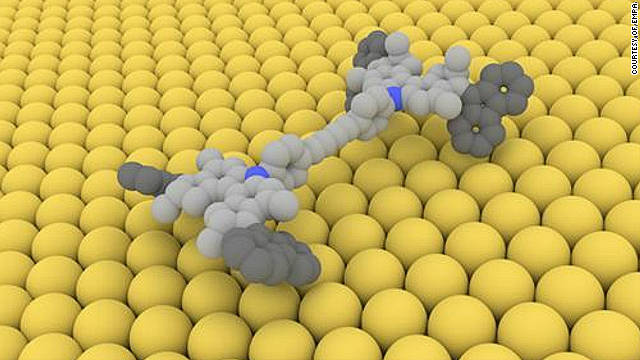Worlds Smallest Nanotech Grandfather Clock
The Jaeger-LeCoultre Reverso Watch Turns 80
December 4, 2011JF Chen Spotlights Eames
December 5, 2011An absolutely amazing article recently in CNN’s Technology Section profiled the world’s smallest working car that is made of single molecules, and responds with movements, such as moving forward, based on the electrical impulses from a nano-grid just beneath it. When one stops to think about the implication for having an albeit prototype working vehicle in which lo living animal could ride, of course, at this collection of single molecule molecular size, it is simply mind boggling in terms of the far-reaching consequences this technological breakthrough may have on perhaps just about every aspect of our life. This is said without exaggeration, at least on the part of the author of this blogs post.
Wonderful testing of nano technology can be done with clocks, regardless of the size, but in the style of grandfather clocks, wall clocks, mantle clocks, atomic clocks or as they used to be known as radio-controlled clocks. Imagine clocks that can accurately tell time that have the shape of, say, a full-size howard miller grandfather clocks model, but is comprised of single molecules and powered by a nano-electric grid. Imagine the molecular pendulum swinging back and forth on the grandfather clock, and the 3 weights descending on cue. Whether grandfather clock chimes, such as the Westminster Chime, might be difficult in early stages, over time nothing would be impossible. It is simply an incredible concept.
And the tools that could be used to fix the nano-grandfather clocks would also be made of a small number of molecules. For a keywound chiming grandfather clock, one would need enough molecules of enough materials, assuming the design proportions of a clock are constant for smaller scale molecules and models, to enable, for example, a molecular winding key and a molecular chiming rod or bells or strike gong. One would probably want an amplifier for the chimes, or they likely would not be heard by any current living human ear.
While writing about the application of nanotechnology for grandfather clocks and mantel clocks and wall clocks and atomic clocks, and reproductions of the great clocks and timepiece masterpieces, it is obvious that this technology can usher in a new era of advances which are truly unthinkable today. The potential benefit to mankind would seem to be as great as the Industrial Revolution, the advent of the personal computer, or the widespread adoption of the internet. Hopefully we will all live to see the many benefits which it seems, inevitably, will be presented over time.
Perhaps not practical, but we still hope the next prototype will be of a nano grandfather clock, and they we may be consulted in its design and construction.
World’s smallest car fuels nanotech advance
By Matthew Knight, CNN updated 11:49 AM EST, Mon November 21, 2011 |

